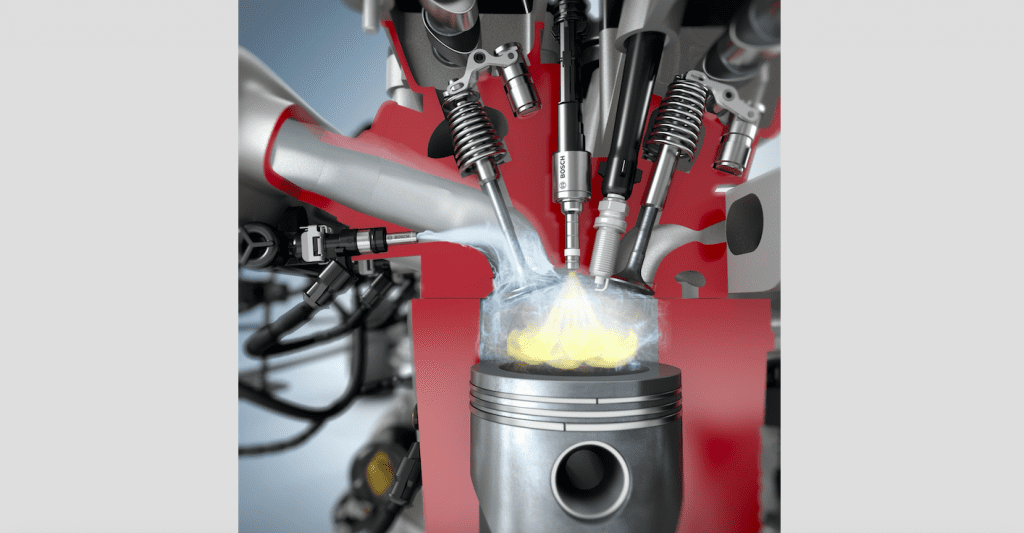So fuel, air, fire and water aren’t supposed to mix, but German automotive supplier Bosch gave it a whirl anyway. And by doing so it has worked out that spraying a very fine mist of water into the ports of BMW’s 368kW six-cylinder sportscar engine can simultaneously increase power output, significantly reduce fuel consumption, and lower carbon dioxide emissions. Because according to Bosch, in even the most modern engines quite a lot of fuel is actually used to cool parts of the engine rather than power it – especially at high speeds or over long periods of sustained use.
The technology is currently featured in one production vehicle, and it’s not a motorcycle but BMW’s six-cylinder M4 GTS. But with the firm revealing that the technology is actually most effective at reducing fuel consumption on three- and four-cylinder engines – and with ever tightening emission regulations leaving many much-loved motorcycle models gasping for what could soon be their last breath – it very well may be something we see in the two-wheeled world soon. Even Bosch says it chose port injection over a direct injection system because it costs less, making water injection “suitable for large-scale production, as well as for many vehicle segments”.
More power
Bosch is claiming its innovative WaterBoost system can increase engine power by up to five per cent without increasing displacement or, in the case of force-fed engines, boosting pressure. It says the tech not only reduces the temperature of the engine’s parts, but also reduces the temperature of the fuel-air mixture, which allows for an earlier ignition and increased performance.
Less fuel
Up to 13 per cent less fuel, says Bosch, during high acceleration or on long highway stretches. So because the distilled water (a five litre tank which requires filling every 3000km) is now doing the job of what Bosch claims to be in some cases up to 20 per cent of fuel that could be used to cool instead of propel, the consumption gains are easy to see.
Lower emissions
Because the entire combustion process is happening at a cooler temperature and in an altogether more efficient fashion with a higher compression ratio, up to four per cent less carbon dioxide is being emitted at the other end. “With our water injection,” Bosch’s Dr Rolf Bulander says, “we show that the combustion engine still has some tricks up its sleeve.”
By Kellie Buckley












